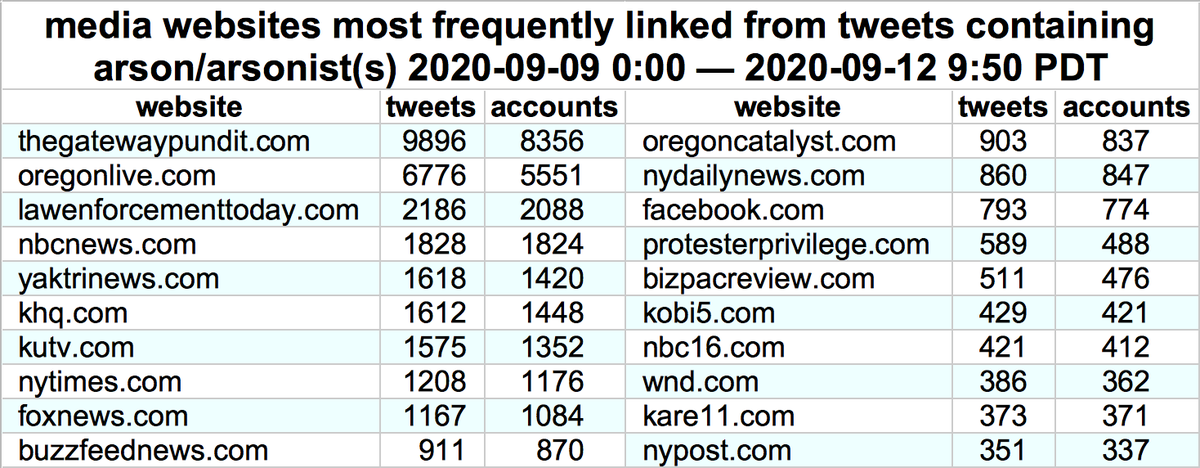The wildfires presently burning in the Western USA have given rise to various conspiracy theories claiming that the conflagrations are an organized campaign of arson conducted by antifa, with a side of climate change denialism.
cc: @ZellaQuixote
cc: @ZellaQuixote

We downloaded recent tweets containing "arson", "arsonist", or "arsonists", yielding 267136 tweets from 169105 accounts. The traffic largely doesn't look automated, but the accounts involved are disproportionately 2020 creations. 



Retweet network for recent tweets containing arson/arsonist/arsonists. The largest cluster consists of right-wing accounts, most of which are putting forth the proposition that the wildfires are an act of political violence by antifa. 

The media website mostly commonly linked from recent tweets mentioning arson/arsonist(s) is Gateway Pundit, followed by a variety of other right-wing conspiracy sites as well as mainstream local and national news sources. 



Gateway Pundit published an article on Sept 10 that (without evidence) described an arson suspect as an "antifa radical". They later edited the article/headline, but the disinfo lives on as 1430 of 1439 tweets containing the headline (99.3%) have the original erroneous version. 

One more interesting factor at work in the spread of claims that antifa arsonists are starting wildfires in the Western USA: retweet rooms. We found 292 #MAGA accounts whose tweets/retweets consistently get more retweets than likes among the recent arson/arsonist tweets.
(Background on #Mighty200 retweet rooms and how we determined that frequent tweets with more retweets than likes are a sign of the use of retweet rooms or similar forms of astroturfing)
https://twitter.com/conspirator0/status/1273077086761213952
Here are a few examples of recent arson-related tweets that were likely amplified via #MAGA retweet rooms (note that each got substantially more retweets than likes.) 

• • •
Missing some Tweet in this thread? You can try to
force a refresh































